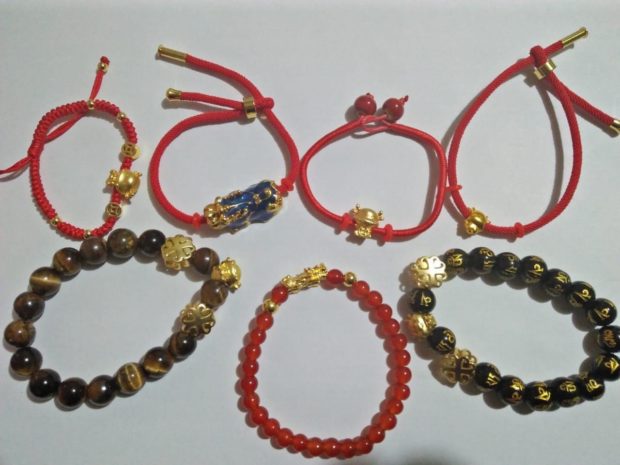Group cautions public vs lucky charms containing toxic metal cadmium
MANILA, Philippines — Good luck from charms might turn into a bad fortune, according to a local environment watchdog, if consumers won’t be keen enough to know that their prosperity amulets could be a vessel of poisonous substances.
EcoWaste Coalition on Friday warned of toxic chemicals in lucky charms, which lure many people especially around this time of Chinese New Year celebrations.
According to the group, it purchased and found some lucky charms laden with soaring levels of toxic metal cadmium.
“We caution consumers from buying and wearing lucky bracelets with ox components that are often made of cadmium alloy,” Thony Dizon, chemical safety campaigner of EcoWaste Coalition, said in a statement.

Photo from EcoWaste Coalition
Dizon explained that cadmium belongs to the priority chemicals list or chemicals that the Department of Environment and Natural Resources-Environmental Management Bureau (DENR-EMB) has determined to pose an unreasonable risk to public health, workplace, and the environment.
The World Health Organization also listed cadmium among 10 chemicals of major public health concern.
Article continues after this advertisementEcoWaste said that of the 12 ox-inspired lucky bracelets it purchased for P35 to P250 a piece from retailers in Quiapo, Manila City, seven were found to contain elevated levels of cadmium ranging from 118,500 to 287,800 parts per million (ppm). The group used a handheld x-ray fluorescence analytical device to screen the samples for cadmium.
Article continues after this advertisement“These products would be illegal to sell in Europe, which prohibits cadmium equal to or greater than 100 ppm in jewelry due to the concern that children could be exposed to this toxic chemical through skin or oral contact with such jewelry,” added Dizon.
Cadmium is likewise classified as “carcinogenic to humans” by the International Agency for Research on Cancer, according to EcoWaste, noting the chemical is known as a reproductive and developmental toxin associated with reduced birth weight, premature birth, stillbirth, spontaneous abortion, and birth defects in humans, as well with behavioral and learning disabilities.
In 2016, the group requested the DENR-EMB to draw up a Chemical Control Order (CCO) for cadmium and its compounds after detecting high levels of cadmium in some cosmetics, electronic goods, jewelry, toys, and plastics, particularly tarpaulin materials.
EcoWaste said a CCO is urgently needed to prohibit, limit or regulate the use of cadmium, particularly in the production of certain products that could expose the public from “preventable sources of cadmium exposure,” or pollute the environment with cadmium through unsafe disposal practices.
The DENR-EMB has released a draft CCO for public comments in 2018 but it has yet to be signed and promulgated, it said.
RELATED STORIES
Some good luck charms may be bad for you
Lead, arsenic found in lucky charms sold in Manila